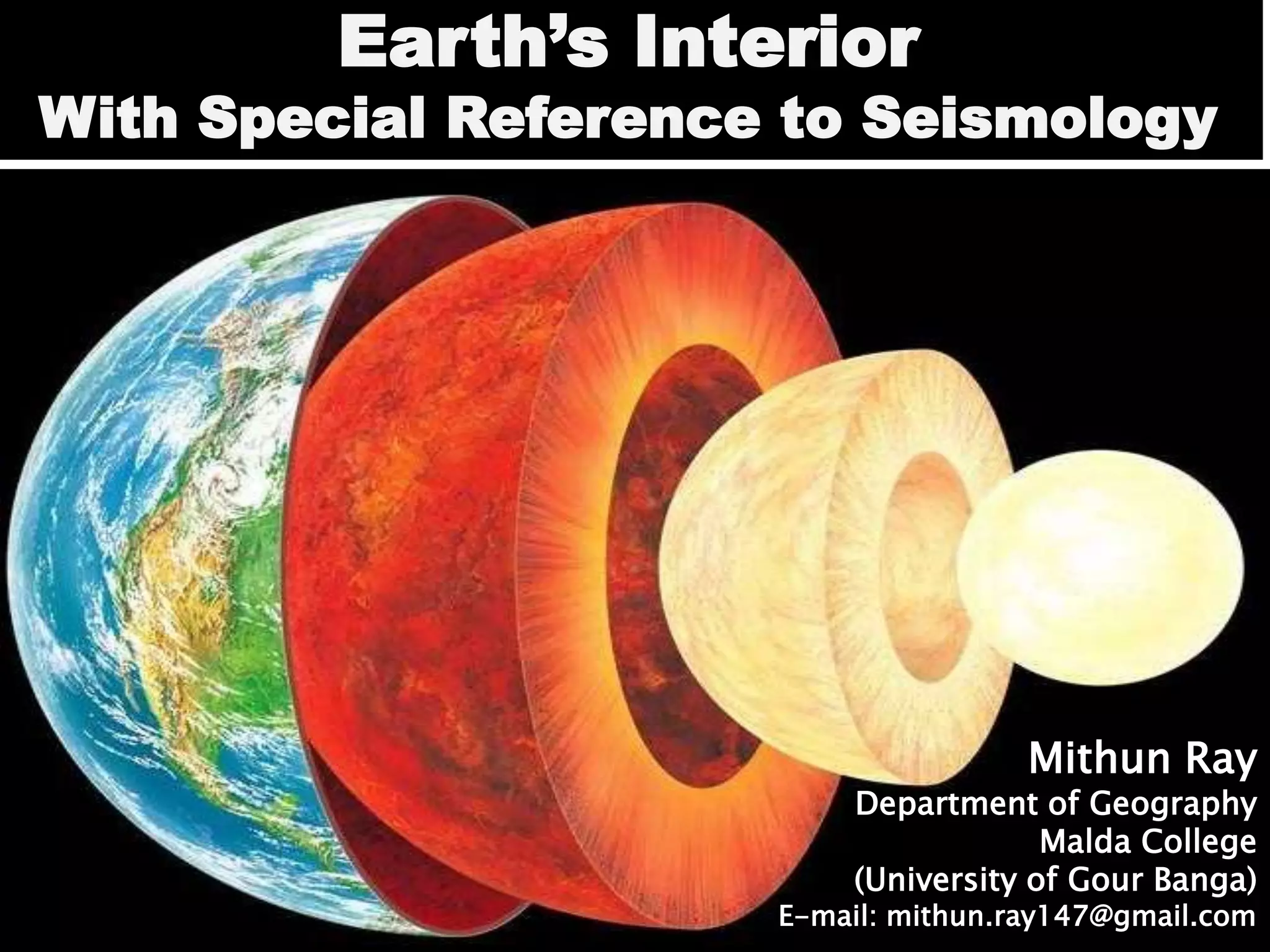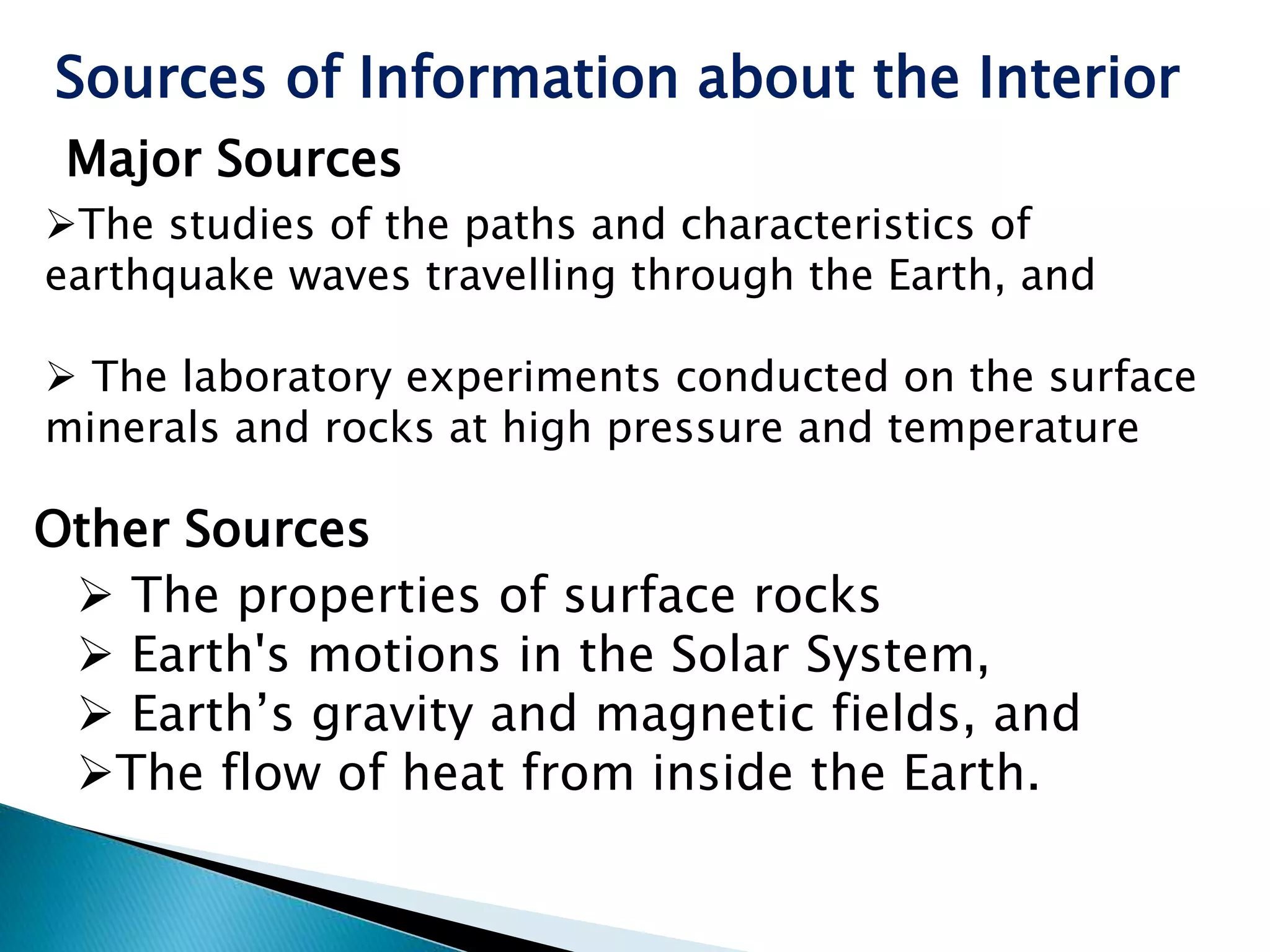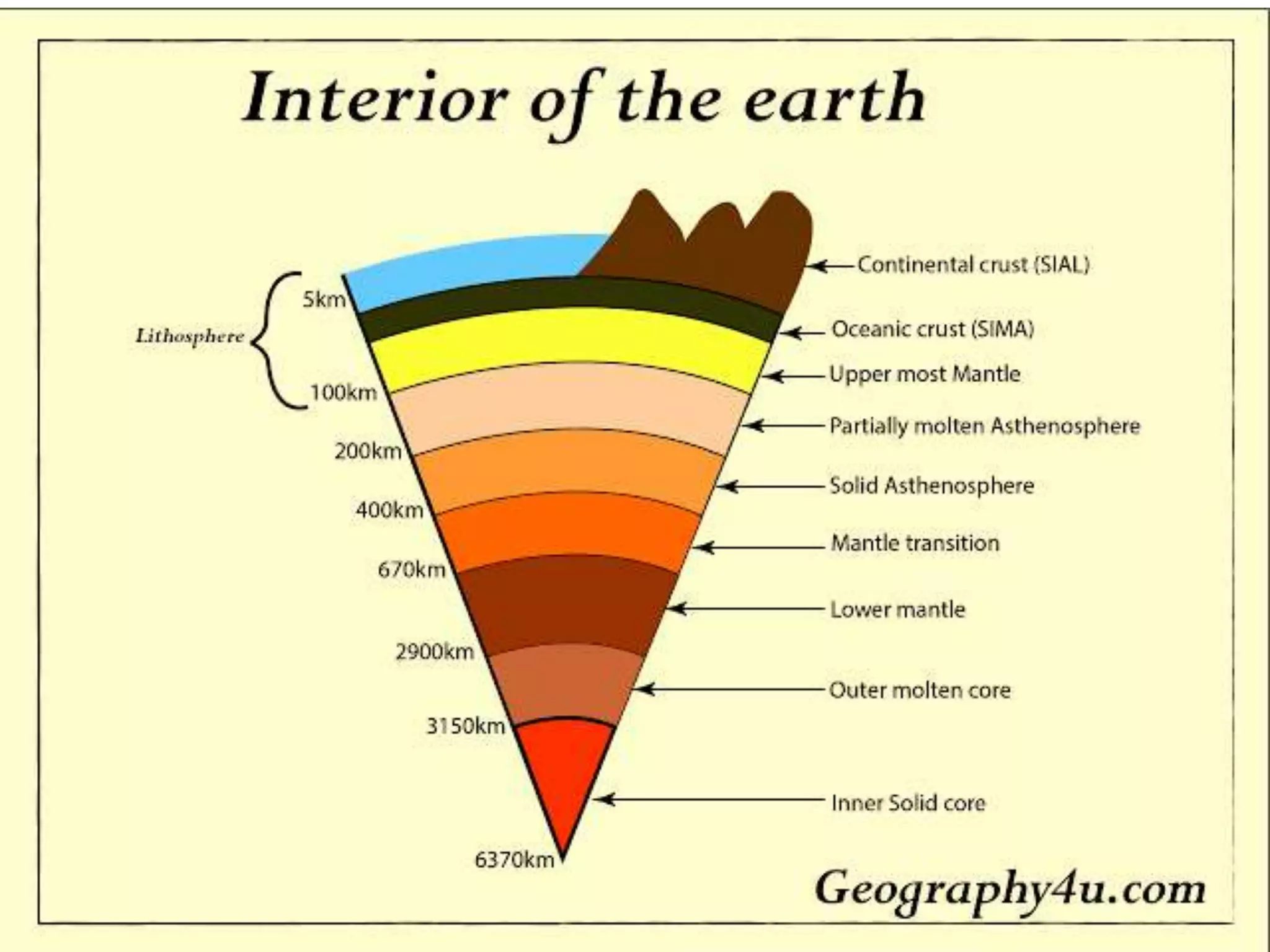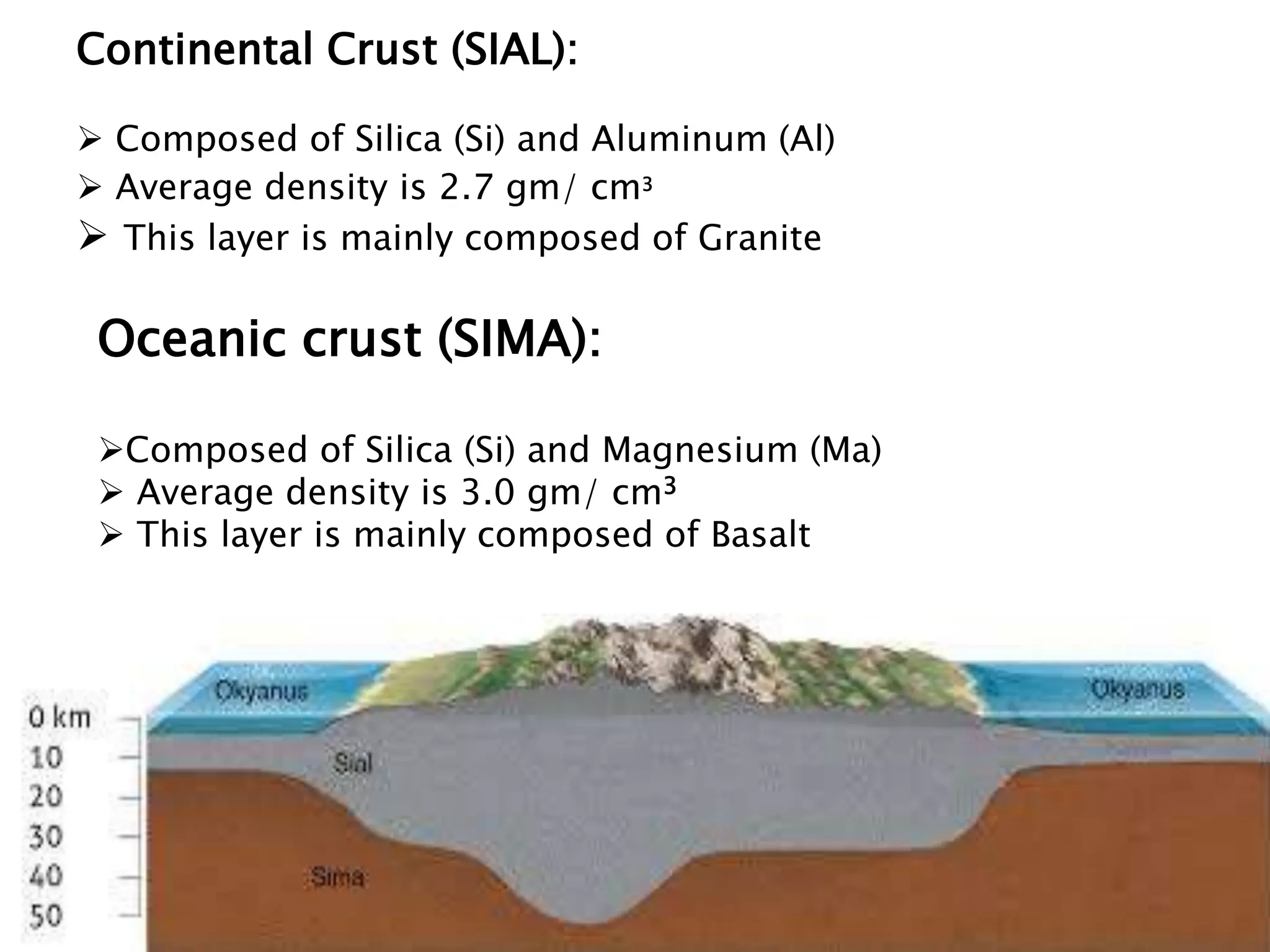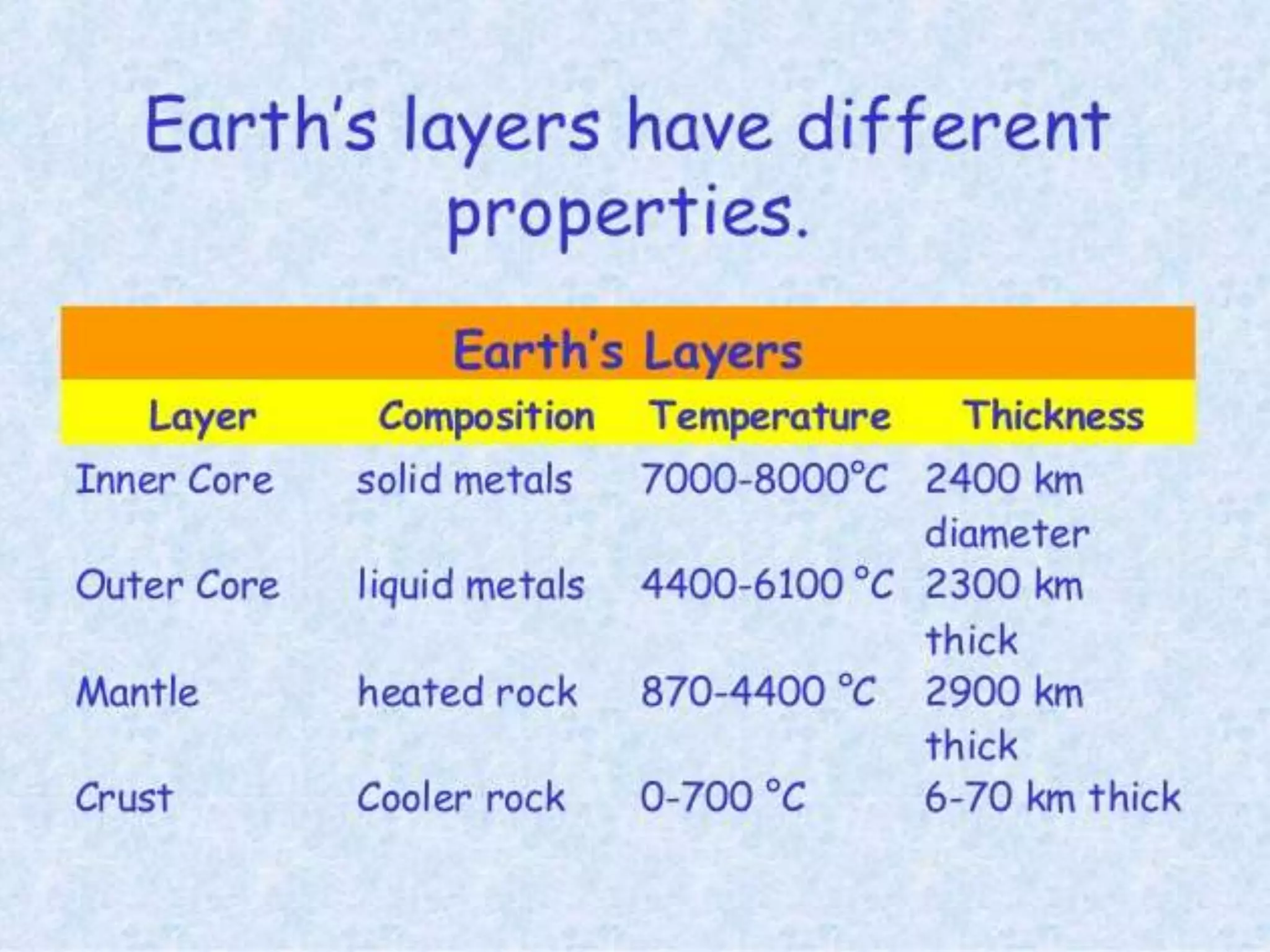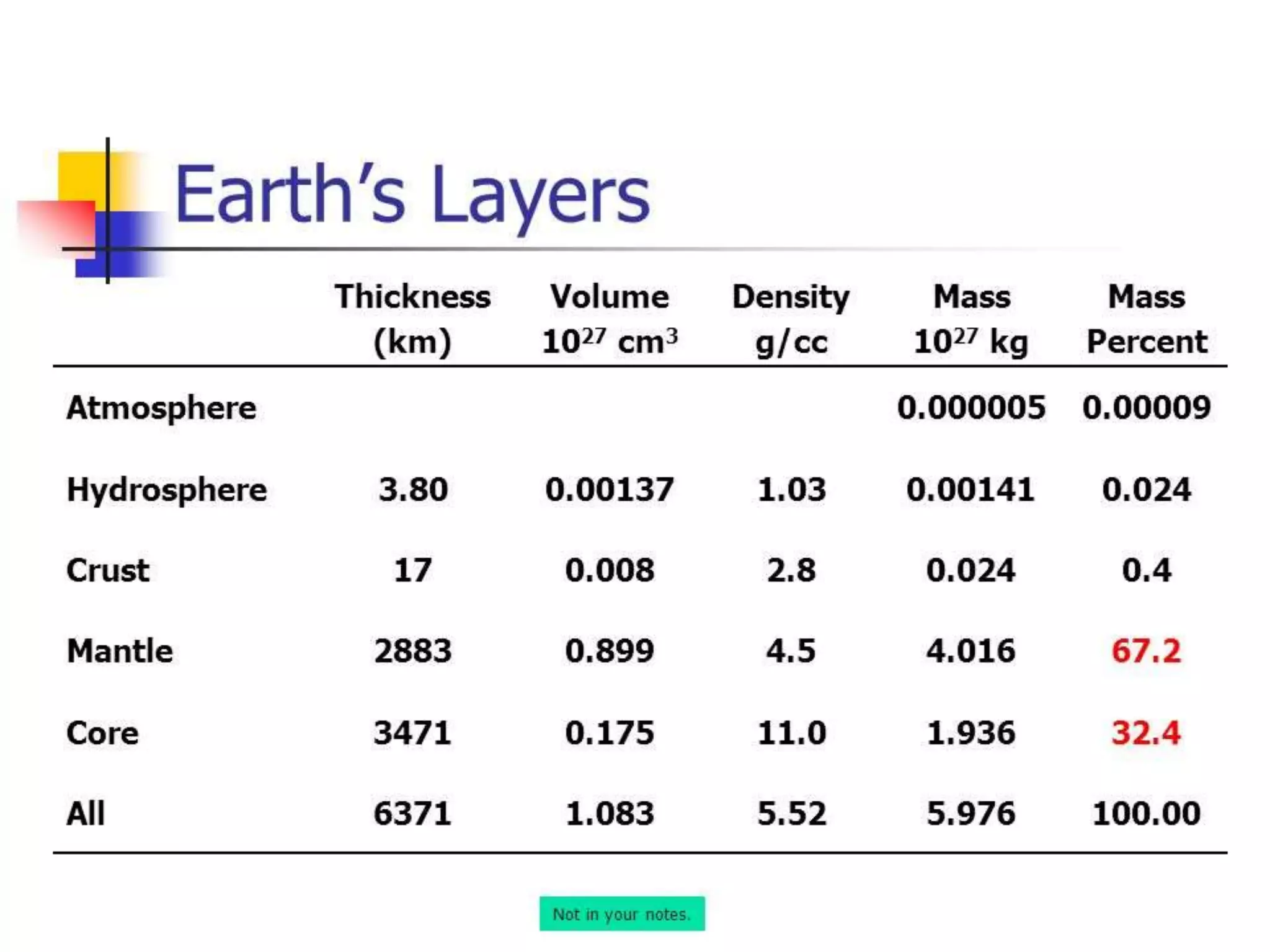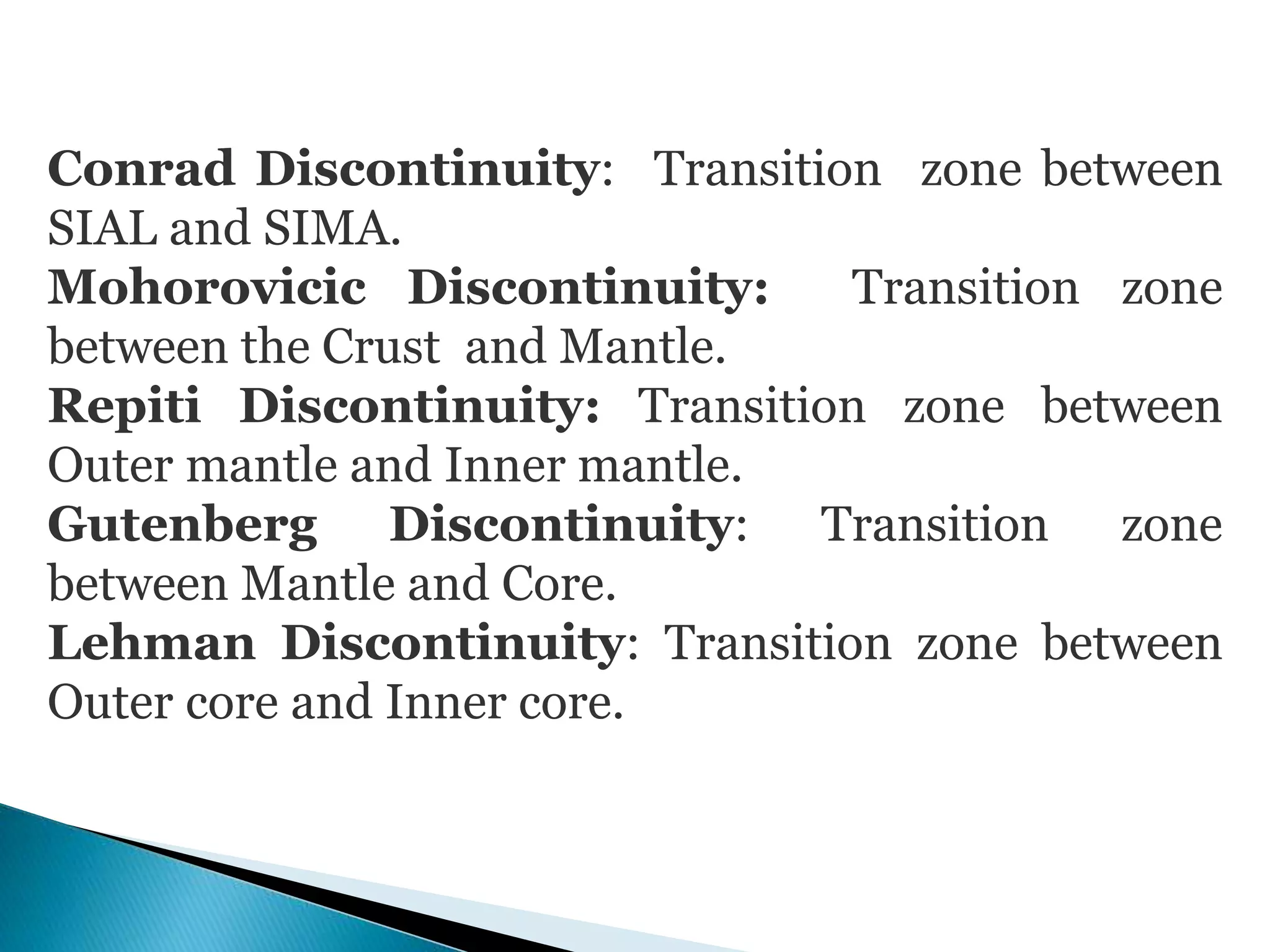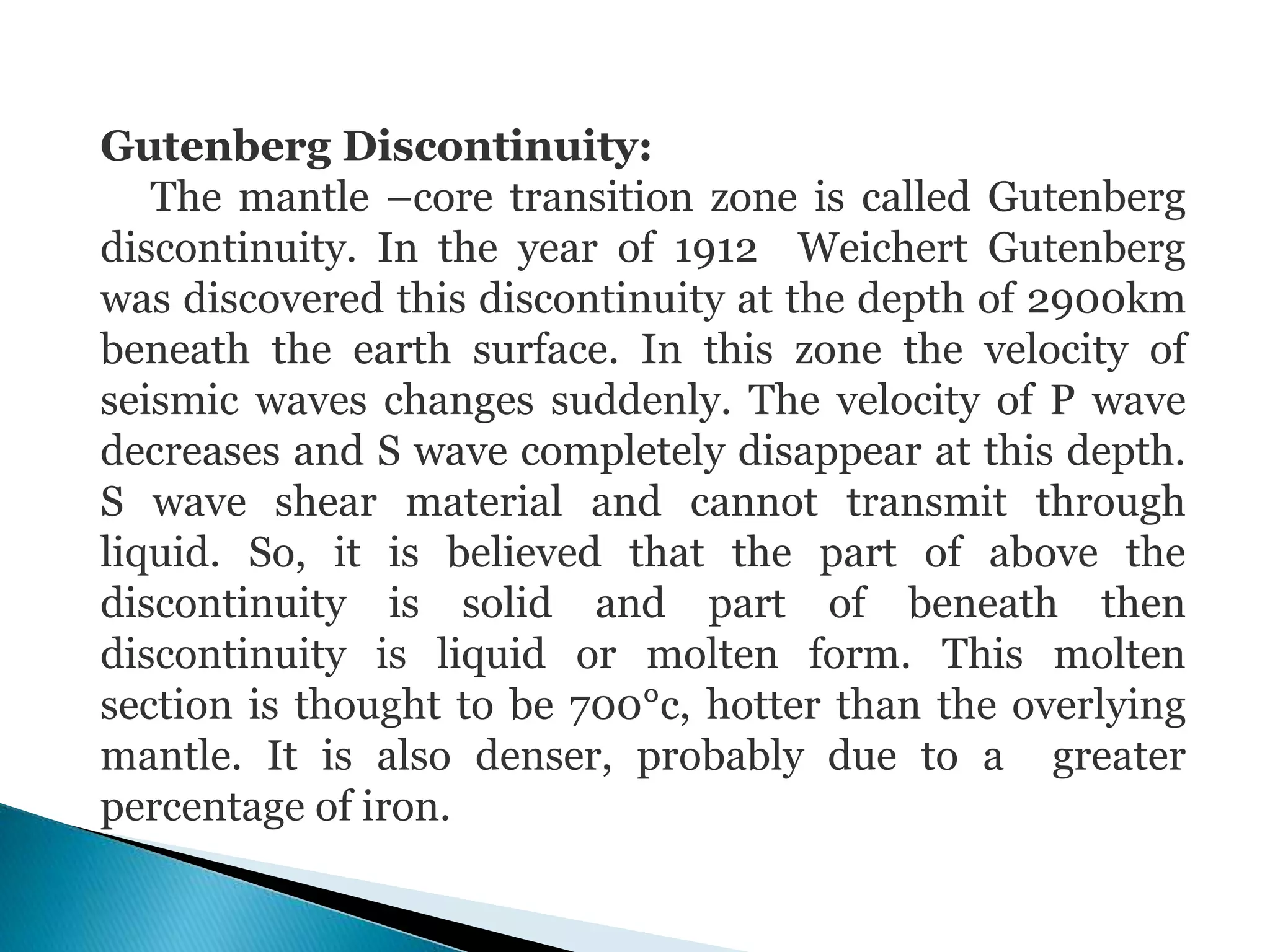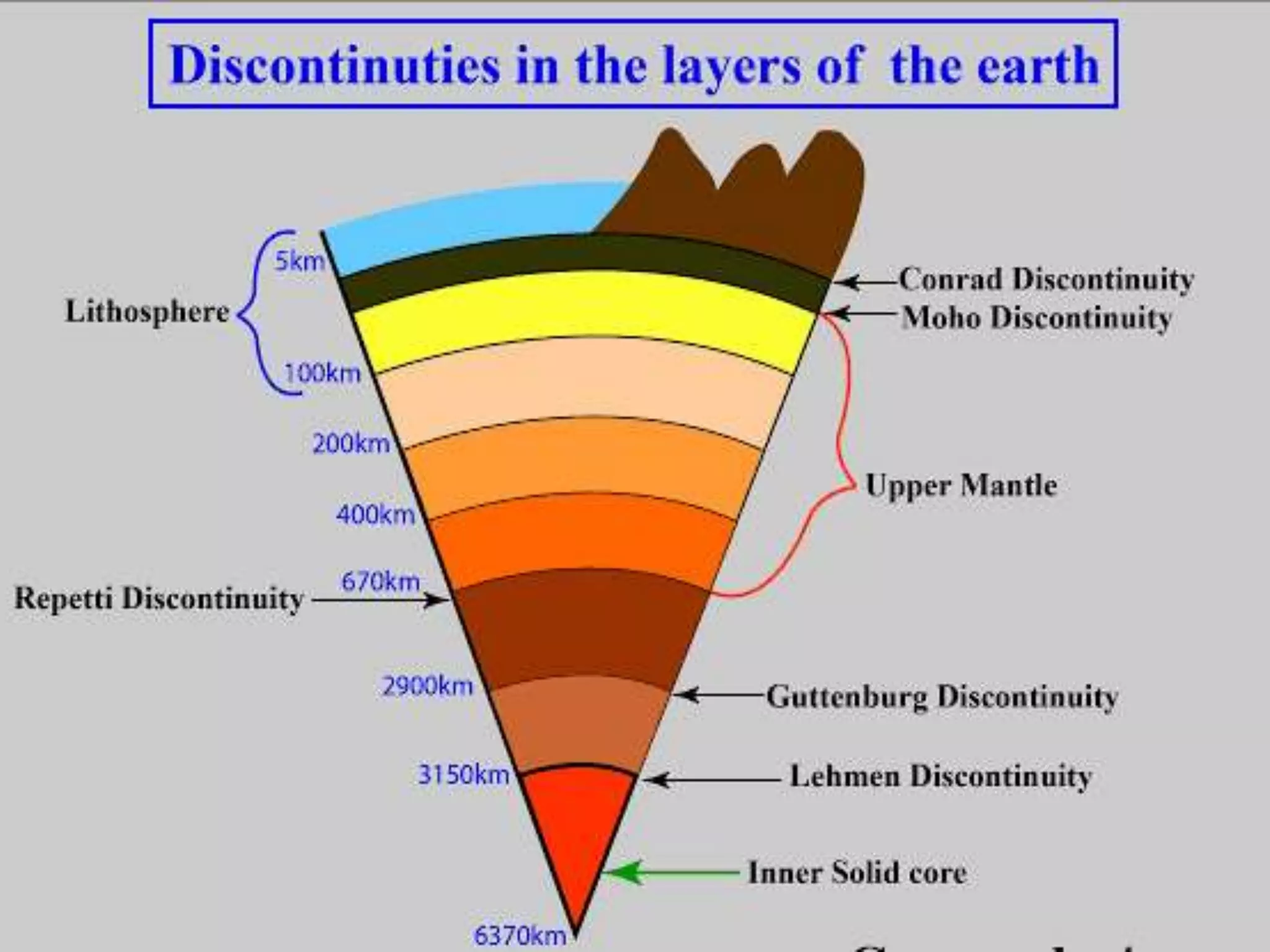This document discusses Earth's interior structure based on seismic wave evidence. It begins by introducing seismic waves like P and S waves. Observing how they travel through Earth reveals its layered structure. The crust and mantle can be detected by changes in wave speeds at boundaries like the Mohorovicic discontinuity. Liquid layers are identified by S waves stopping at the outer core. A solid inner core is known from P wave reflections. Together, precisely tracking seismic wave paths and speeds informs our understanding of Earth's composition and properties within each internal layer.
